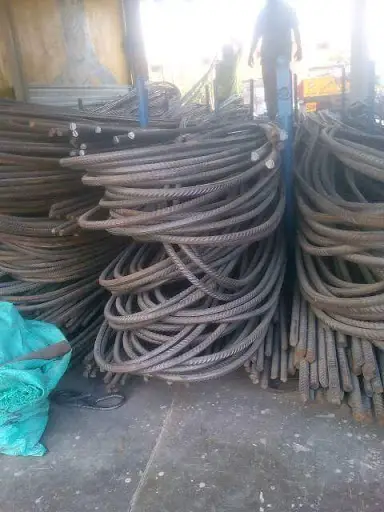Saad Iqbal | 🗓️Modified: February 3, 2017 | ⏳Read Time: 5 min | 👁Post Views: 1262
Recently one of our fans have asked us on a social networking site the above cited question about why we use steel reinforcement in concrete moreover why only steel not any other metal available in the industry.

Well, working on a mega DAM as structural engineer I can imagine how much huge quantity of reinforcement is actually used now days, I mean 36 mm (#11) bundles of 3 bars and in 3 layers and even more than that.
In this post we would try to explore the reasons and grounds on the basis of which the concrete is heavily reinforced with steel reinforcing bars.
Reinforced Cement concrete (RCC) is a fusion, blend and mixture of Coarse aggregate, fine aggregate, cement as a binding agent, water; this matrix is then reinforced with different grades of steel reinforcing deformed bars, the quantity of which is decided by the designer on the basis of structural analysis and design procedures.
The mixture of these components would create an artificial stone like material which has a great strength to resist load. It will be amazing to realize that stones have already been used by many ancient civilizations like Greeks to construct colossal and gigantic structures that have bulky cross-sections including arches and domes that look aesthetically stunning.
Lets now move towards the reasons why we need to have reinforcement in concrete.
The major and focal cause of this inclusion is weak and fragile behavior of concrete matrix when subjected to tensile stresses. Concrete is actually weak in tension i.e. strength of concrete in tension is approximately 1/10th of the strength of concrete in compression.
Reason of this weak behavior is because of the fact that concrete is not a homogenous material like steel rather a composite material having Interfacial Transition Zones. When the concrete is subjected to compression this transition zone will make the aggregates to come closer and will only transfer compressive force from one aggregate to the other.
Whereas, in case of tension, the aggregates will try to move away from each other and this transition zone will be in need to resist tensile stresses and as this zone is very weak than aggregates thus failure will start at very much low stress level.
This weak characteristic of concrete will induce brittle nature within the matrix which is very dangerous as far as the serviceability of the structure is concerned as in the brittle failure no warning signs are shown by the structure prior to failure.
As is rightly said, necessity is the mother of invention, same is the case here; the requirement to make concrete ductile a French industrialist Coignet came forward in 1853 and gave the idea to introduce steel reinforcing bars in the form of rods or grids that will confer the concrete missing property to resist tension.
Now here one may ask one more question if steel is good both in tension and compression why not we use steel as construction material everywhere. The simple answer to such a question would be that steel alone is very expansive and concrete is cheap thus we use both to utilize the advantages of both the materials.
One of a very important advantage that can be taken as serious benefit to our assumption is that the coefficient of thermal expansion of concrete is in order of 14 x 10 ^ -6 whereas that of steel is in order of 12.6 x 10 ^ -6 which is very near. It means that if both the materials will be heated together in a matrix then both the materials will experience almost same strains and thus no internal stresses would be developed.
If this was not the case and internal strains would develop, the cracks will be induced in the concrete breaking the bond between steel rebar and concrete make inclusion of steel rebar as useless.
It is further to be noted that steel is easily available in different sizes and also can be easily recycled as there are huge furnaces available where they can be processed and recycled.
One of a very unique behavior of steel is called strain hardening. In strain hardening when the steel rebar is deformed beyond yield point then more stress would be required to further deform the reinforcing bar for additional plastic deformation, thus, apparently in such a case the strength of the material apparently increases.
This is also why we can not use any other metal like aluminum as aluminum does not possess such thing as strain hardening.
That’s all gentleman, I hope I have explained all the main and important reasons why we prefer and would love to place reinforcement in the concrete in any structure. If you have any queries then let them come by comments below.

